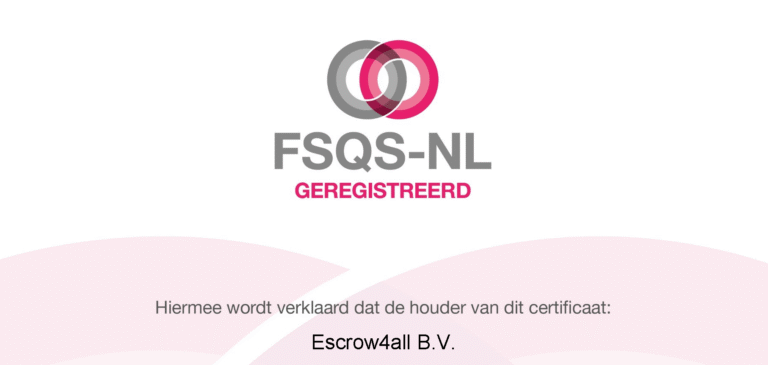
Why an Escrow Arrangement Is Essential in Tender Processes
Tender procedures often involve large budgets, long-term projects, and mission-critical systems. Everything must be in perfect order, from technical specifications to legal requirements. Yet one key aspect is often underestimated or even completely overlooked:
What happens if the software supplier fails?
Especially in tenders where public or semi-public organizations depend on a specific software solution for years, continuity is crucial. And that’s where escrow comes in.
What Exactly Is Escrow?
An escrow arrangement ensures that you always have access to the source code, data, and/or a working version of your system — even if your supplier stops operating, goes bankrupt, or can no longer meet their obligations.
In a tender process, that’s not a luxury, it’s a must-have. Here’s why:
Long-Term Dependence on a Single Supplier
Many tenders result in custom-built software or specialized SaaS solutions. In practice, this means you, as the contracting authority, are dependent on one supplier for years.
But what if that supplier suddenly disappears?
Without escrow, you’re left empty-handed and your system, and therefore your services, come to a standstill.
Public Accountability and Transparency
Governments and (semi-)public institutions carry a special responsibility: they must demonstrate responsible use of public funds and manage risks transparently.
A solid escrow agreement shows that your organization is prepared for emergencies.
It’s not just sound risk management — it’s also a sign of professional governance.
Compliance and Procurement Requirements
Continuity and information security requirements are increasingly being explicitly included in procurement processes, think of ISO 27001, NEN 7510, or ENSIA standards.
An escrow agreement helps demonstrate compliance with these standards.
In fact, some contracting authorities now require an escrow arrangement by default for business-critical systems.
Set It Up Early = Avoid Problems Later
The best time to arrange an escrow agreement is at the moment of contracting.
Trying to fix things later, once the project has started or the supplier is under pressure — is often more expensive, complicated, and risky.
By including escrow from the tender phase onward, you give both yourself and your supplier clarity and security from the start.
Including Escrow in Your Tender: How to Do It
- Include escrow as a mandatory condition in the tender specifications or requirements.
- Ask suppliers about their experience with escrow solutions.
- Work with a neutral, independent escrow provider (such as Escrow4All) who understands both the legal and technical dimensions.
- Choose an escrow model that fits your solution — Software, source code, data, or even entire working environments (as with SaaS Escrow).
In Summary
Tenders revolve around reliability, transparency, and continuity.
An escrow arrangement helps you guarantee all three — even when challenges arise.
It protects not just your software, but also your reputation.
Want to know how to strategically integrate escrow into your next tender?
Get in touch with us — we’re happy to help you think it through.
Also view these posts


Escrow in Logistics

Escrow4All has moved from the 15th to the 12th floor

Let’s meet
Looking for innovative escrow solutions?
Contact us now.
